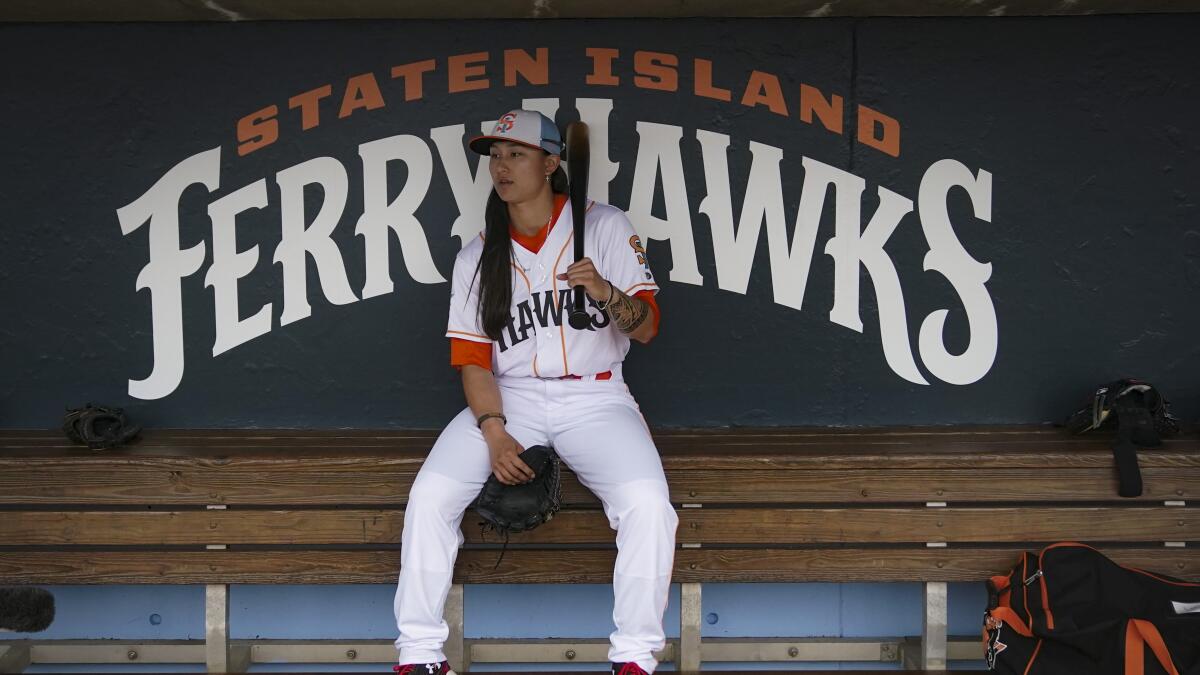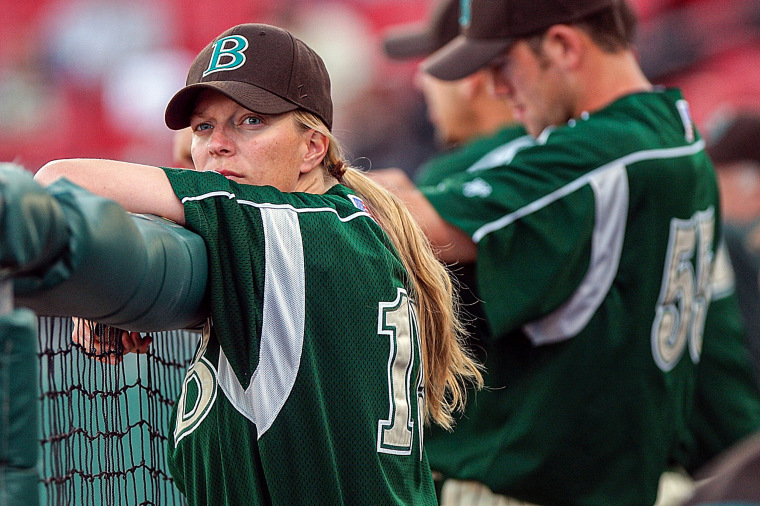In the United States, women haven’t had their own league for about 70 years.
However, the recently announced Women’s Pro Baseball League (WPBL) organizers see six teams of women wearing cleats and caps playing on diamonds that have been used almost exclusively by men for almost 150 years by the summer of 2026.
WPBL co-founder Justine Siegal told NBC News on Friday that baseball’s current surge in popularity was aided by the tremendous expansion of women’s collegiate and professional basketball as well as the decades-old appeal of women’s soccer.
Siegal, who became the first female Major League Baseball coach when she joined the Oakland Athletics organization in 2015 and currently serves as the head of Baseball for All, a nonprofit organization that promotes baseball for girls, said, “This is definitely a great time for women’s sports and pro sports as men and others have finally figured out how great women are as athletes.”

“This is a fantastic opportunity to highlight our baseball players,” Siegal stated.
The league’s most fundamental need—players with expertise in America’s pastime—may outweigh the Ruthian job of finding franchise owners, six Northeastern towns, stadiums, and sponsors.
According to officials at the National Federation of State High School Associations (NFHS), no state offers females baseball as a high school sport. Women’s softball is available in the NCAA and NAIA, but not hardball.
Nevertheless, according to NFHS data, 1,372 high school girls participated in boys’ baseball teams across the United States during the previous academic year.
The 345,607 females who whirled softballs around the diamond this past spring and the 471,761 guys who played baseball still dwarf that startlingly high total.
According to Siegal, the 1,372 females do not fairly represent the actual pool of talented girls and young women who play hardball off school grounds.
“Girls are currently participating in local leagues and baseball games across the nation,” Siegal stated.
She went on to say, “The WPBL will be able to give a pipeline for girls who are being told they should quit when they now know that they have a place that they could play in. The baseball community has already moved forward, growing the sport for girls.”
The pioneer of big league baseball for women in the 1990s, Ila Borders, stated that she fully supports this endeavor but is shocked that it is taking place without a more extensive amateur talent pool.
“With more high school [players], I assumed it would go that way before moving on to college.” Borders, who is currently a training captain with the Clackamas Fire District in Oregon, stated, “I felt like it was trying to take that route and then go pro.” “However, it appears that they are attempting to develop people and then say, ‘Hey, let’s go pro with these six teams.'” Perhaps this will have a cascading effect.
Women who played elite collegiate softball or teamed up with men on lower-division hardball teams make up the U.S. women’s national baseball team.
Softball players played a crucial part in the WBSC Women’s Baseball World Cup gold medal game this summer, which Team USA lost to Japan.
Jillian Albayati, a softball and baseball player for Cal State San Marcos, started as the pitcher; Ashton Lansdell, a softball infielder for Florida International University, led off with two runs that day; and Alex Hugo, a former University of Georgia softball star, drove in three runs as the No. 2 hitter.
Siegal’s partner in this endeavor, Keith Stein, a businessman and lawyer from Toronto, stated that he anticipates softball players, who are relatively new to baseball, will have a “significant role” on the rosters of the 2026 teams.
He stated, “I think there’s going to be a significant component of that, yes, but it’s hard for me to crystal-ball that one.”
A pipeline for the female
For young men and boys, the route to Major League Baseball is a simple one: travel ball and Little League during their childhood, high school and American Legion ball during their teens, being drafted after high school or after three years of college, and then enduring the lengthy bus rides of the minor leagues before making it to the show.

In the not-too-distant future, Stein expressed his hope that the success of this new league will establish a comparable baseball pipeline for young women and girls.
“We want to provide young players with a goal to strive for.” He declared, “We want the right baseball pipeline and infrastructure to help female players grow in the United States.” “Therefore, that is a crucial aspect of our vision.”
For casual American sports fans, moviegoers, and TV viewers, the idea of women playing baseball is not at all alien.
Women had a field to play on during World War II and the Korean War thanks to the All-American Girls Professional Baseball League.
Geena Davis, Tom Hanks, Lori Petty, Rosie O’Donnell, Madonna, and director Penny Marshall all starred in the well-known 1992 movie “A League of Their Own,” which dramatized the league.
And during its brief run from 2016 to 2017, the Fox drama “Pitch,” which starred Kylie Bunbury as the first female MLB player and Mark-Paul Gosselaar, widely known for his role in “Saved by the Bell,” was favorably praised.
Although Siegal and Stein acknowledged that they still have a lot of choices to make until their league launches in 2026, they have listed a number of important objectives for its growth:
- A player draft the following November.
- The roster will probably be far less than the 26 players that usually show up for an MLB game because two-way players are so common.
- From May to August, the league hopes to play roughly 40 games at venues that can hold 2,500–5,000 spectators, either in college or minor league settings.
- According to Siegal, she is inclined to play seven innings, which is the norm for women’s international baseball.
- The more complex regulations of the present MLB play, such a pitch clock, shift restrictions, and the universal designated hitter, are being considered by the organizers.
According to Stein, the choice of regulations will almost certainly be influenced by how the game will appear on TV or streaming services.
“We’re simply not doing our job if we don’t have the best possible TV product,” he stated.





